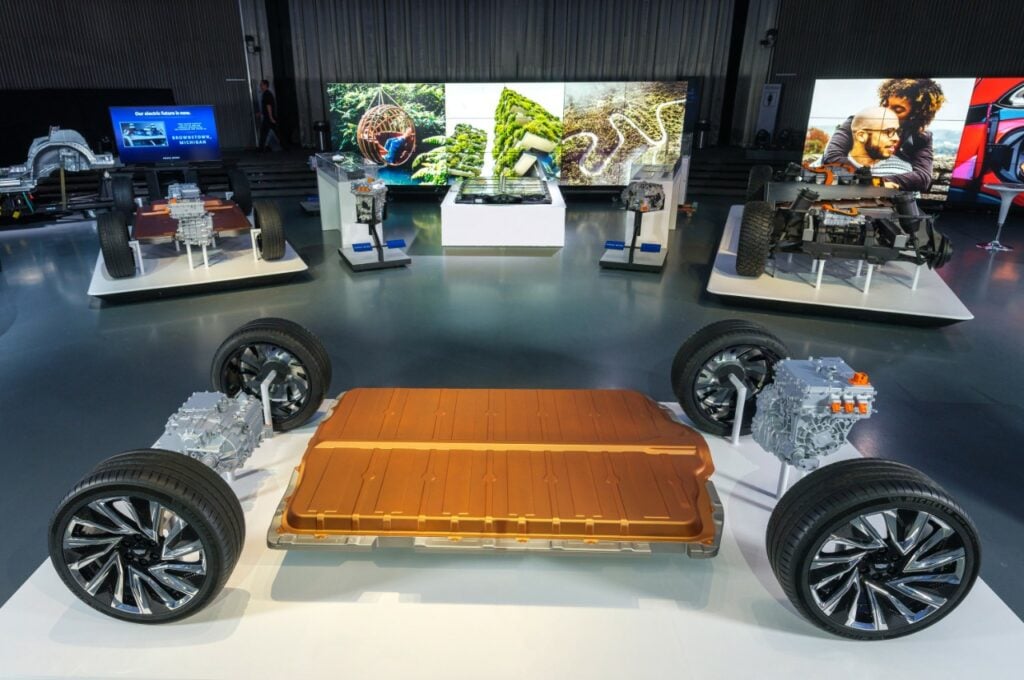
Multiple sources have told major news outlets that President Biden is days away from announcing that he will invoke the Defense Production Act to accelerate domestic production of raw materials essential for manufacturing batteries. The move comes as much of the world’s lithium, nickel, cobalt, iron and aluminum supplies remain offline due to the war in Ukraine. Will the authorization of the DPA finally bring electric cars closer to price parity? Here’s what we know so far.
The Defense Production Act Is About More Than Electric Cars

Sources say that the authorization of the Act would apply to raw materials needed to make both electric vehicle batteries and high-capacity batteries used for electric grid stability, usually in conjunction with renewable energy. Domestic energy is seeing renewed interest as reliance on unstable international relations throws a wrench in American energy stability yet again.
High-capacity batteries like the Tesla Megapack are similar in nature to EV batteries, but they require even more lithium, nickel, cobalt and iron than car batteries do simply because of the massive size and capacity. In the near future, energy experts warn that electric vehicle manufacturing and grid-scale battery production could be forced into fierce competition for limited raw material supplies. Accelerated raw material production may be the remedy that both industries need to continue growing in the 2020s.
Cobalt has fallen out of favor for battery manufacturers in recent years, not because of its effectiveness as an ingredient, but because of the dangers of cobalt mining in Africa. The DPA could bring about a resurgence in the use of cobalt, among other market changes.
What Is the Defense Production Act of 1950?
This three-pronged law authorizes the president to require businesses to accept and prioritize contracts for materials deemed necessary for national defense. The law also gives the authority to establish mechanisms to allocate materials, services and facilities to promote national defense. Furthermore, the Defense Production Act authorizes the president to exert control over the economy so that critical materials are available for national defense.
The Act does specify that it can apply to the production of basic resources, such as raw materials that are important in the nation’s economy. You can read the full text of the DPA here.
When Was the Last Time the Defense Production Act Was Invoked?
The law is invoked more often than one might suspect. Past presidents have used the law’s three major sections to address matters of national security, public safety, and the economy.
Here are the the most recent uses of the Defense Production Act:
- September 2021: President Biden invoked the DPA to increase the production of supplies needed for fighting wildfires across the American West.
- January and March 2021: President Biden authorized the DPA twice for causes related to the COVID-19 pandemic.
- April 2020: President Trump invoked the DPA to accelerate the production of N95 masks.
- March 2020: President Trump used the DPA to speed up production of respirators.
Will the Defense Production Act Lower Electric Car Prices?

It’s certainly possible that President Biden’s use of the DPA could lower electric car prices, but don’t expect this anytime soon with current inflation and chip shortages. What’s more likely is that the additional raw material supplies will deter additional electric car price increases once nickel, lithium, cobalt and other important materials are substantially produced domestically.
Tesla recently cited nickel’s tenfold price increase when raising prices in early 2022. Raw materials are becoming the limiting factor for affordable electric cars in America and across the world, as we explained in our recent article on soaring EV prices.
CarEdge’s Take
For years now, electric vehicle proponents have pointed towards a not-so-distant future when electric cars reach price parity with combustion vehicles. When EVs cost the same as an equivalent gas vehicle, the masses would convert to electric mobility. As time has shown, EV price parity has been a lot harder to accomplish than many, including Elon Musk, had hoped.
The use of the Defense Production Act to spur development of American-based raw material sourcing is big news. American battery manufacturers (and EV makers) have always sourced the vast majority of their raw materials from international suppliers, many of which are based in Russia and China. As the pandemic and recent war have shown, global supply chains have their limits. In due time, EV prices may finally reach price parity if their most expensive component, the battery, becomes a lot less expensive to make.





0 Comments